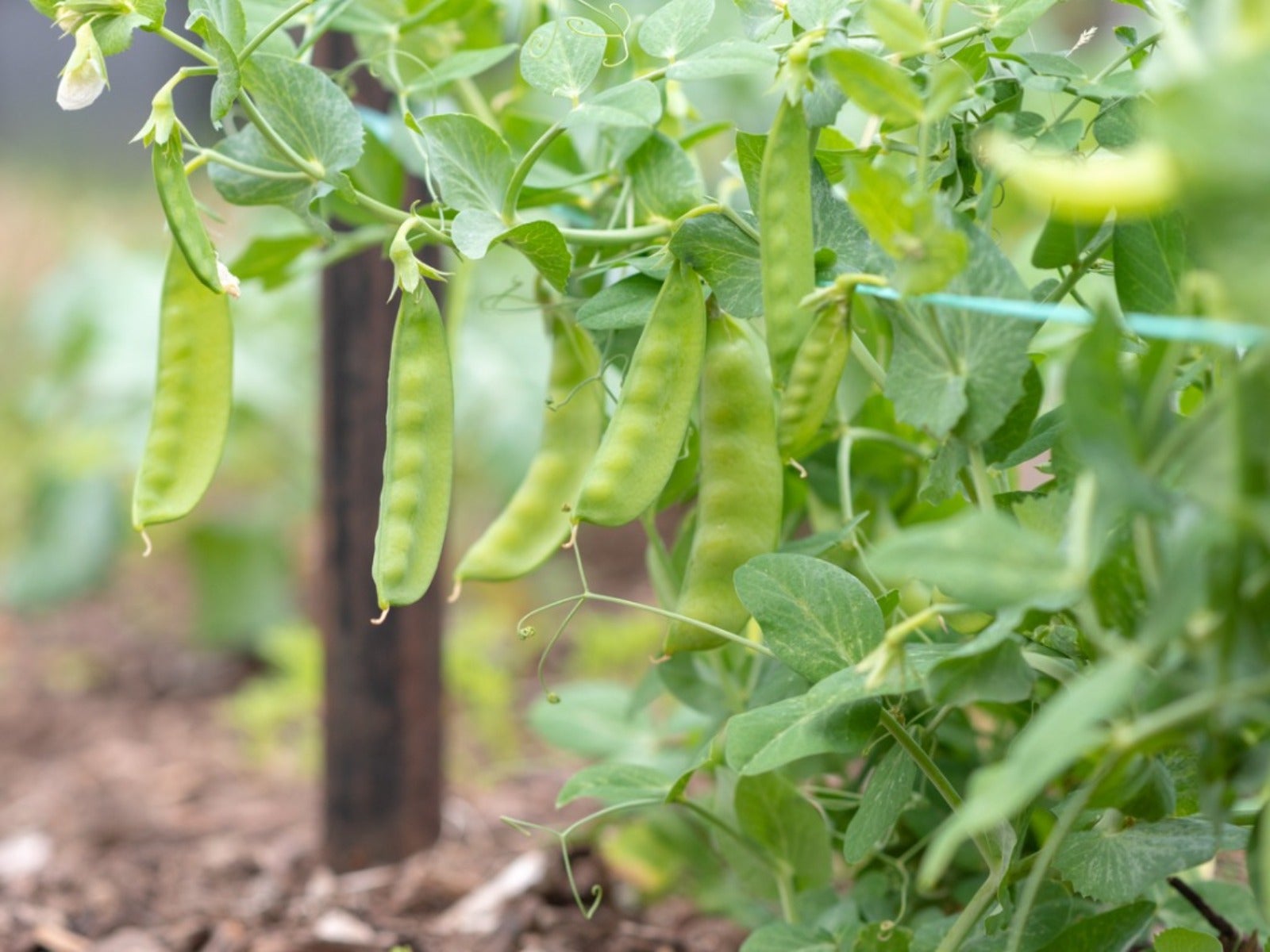Differences In Snow Peas Vs. Snap Peas


Are snow peas and snap peas the same? Although these types of peas sound similar and both have an edible pod, there are significant differences between the two. Understanding the distinction allows gardeners to grow the desired type and harvest these peas at the correct stage of development.
Snap Peas vs. Snow Peas
Peas are members of the legume family. They are divided into three types: English, snap and snow peas. Peas also have two distinct growth habits. Climbing varieties have vines which extend 6 to 8 feet (1.8-2.4 m.) and can easily be grown on a trellis. Bush type peas may only reach 2 to 3 feet (.6-.9 m.) tall, but many gardeners provide support to prevent the plants from flopping onto the ground.
English peas, which are sometimes called garden or shelling peas, are harvested when the seeds are large, firm and round. The pods of this type of peas are lined with a thin layer of tough membrane, which makes the pods inedible. These peas are removed from the pod, preferably before their natural sugars turn to starch.
Neither snow peas nor snap peas have this membrane, thus their pods are edible. It's here that the similarity between snap vs snow peas ends. Snow peas, which are also called Chinese pea pods, are harvested at a very immature stage. The pods are flat and the peas inside are tiny.
Snap peas have rounded pods with a thick, fleshy wall and seeds which have begun to develop. The pod has a sweet flavor, which is why this type is sometimes called sugar snap peas. All three types of peas can have fibrous strings along the edge, but some varieties of snap peas have been bred to be stingless.
Genetic Difference Between Snap Peas and Snow Peas
It can be easy to assume that snow or snap peas are just English peas that are harvested at a young age. From a scientific standpoint, English peas (Pisum sativum var. sativum), snow peas (P. sativum var. saccharatum) and sugar snap peas (P. sativum var. macrocarpon) are related, but are genetically different varieties.
Additionally, English peas originated in Eurasia, where they have been cultivated since around 7000 BCE. Snow peas are native to southwest Asia and were first grown in the 16th century.
Gardening tips, videos, info and more delivered right to your inbox!
Sign up for the Gardening Know How newsletter today and receive a free copy of our e-book "How to Grow Delicious Tomatoes".
In 1952, English peas and snow peas were crossed in hopes of developing an improved variety of English peas. Instead, a new type of pea was created with desirable attributes from both parents. The resultant snap peas had tender, edible pods, but would also produce sweet, shellable peas.
Harvesting Snow Peas vs Sugar Snap Peas
Snow pea pods are harvested when the pods reach the desired length and before the seeds begin to develop. It's best to check the seed packet as some varieties should be picked at 3 to 4 inches (8-10 cm.), while other cultivars will grow to 5 inches (13 cm.) before reaching the seed development stage.
Sugar snap peas can be harvested from the time the peas inside the pod begin to round out until they are nearly full-sized. If left on the vine too long, both snap and snow pea pods will become tough and fibrous. If the seeds of snap peas mature, they can be harvested and shelled like English peas.
Harvesting all types of peas regularly increases blooming and the production of new pea pods. To save seeds for next year's garden, it's necessary to allow snow or snap pea seeds to fully develop. Unlike English peas, the pods of snap and snow peas won't split open when dried on the vine.
Varieties of Snap and Snow Peas
Gardeners have a few choices when it comes to selecting snow and snap pea cultivars. Both types of peas are available in bush or climbing varieties. Some offer disease resistance, while others have an attractive flower or pod color.
Snap pea varieties
- Amish Snap
- Cascadia
- Sugar Ann
- Sugar Daddy
- Sugar Magnolia
- Super Sugar Snap
- Tendersweet
Snow pea varieties
- Avalanche
- Golden Sweet
- Little Snowpea Purple
- Mammoth Melting
- Oregon Giant
- Oregon Sugar Pod
- Snow Max
- Snow Royal

Laura Miller has been gardening all her life. Holding a degree in Biology, Nutrition, and Agriculture, Laura's area of expertise is vegetables, herbs, and all things edible. She lives in Ohio.
-
 Looking For Plants To Give You The Soft And Fuzzies? Try These 5 Fuzzy Leaf Plant Options
Looking For Plants To Give You The Soft And Fuzzies? Try These 5 Fuzzy Leaf Plant OptionsLovers of texture, drama, silver foliage and tactile plants will adore these special sensory garden additions. These fuzzy leaf plant options will leave you all aglow
By Susan Albert
-
 Get Ready For A Summer Of Hummers! Grow These Full Sun Hummingbird Plants and Flowers
Get Ready For A Summer Of Hummers! Grow These Full Sun Hummingbird Plants and FlowersIf you’re lucky enough to enjoy a sunny backyard, make sure you are maxing out on your pollinator opportunities and grow these full sun hummingbird plants and flowers
By Tonya Barnett